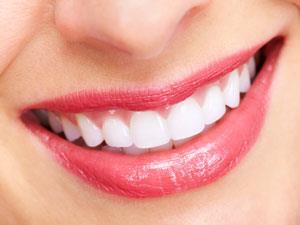
Over time, gleaming teeth become stained by repeated exposure to vices such as coffee, red wine or cigarettes. Current whitening methods include replacing the crown of the tooth or etching off stained enamel using chemical abrasives like hydrogen peroxide. These require the removal of part of a healthy tooth, and can lead to gum irritation and sensitive teeth.
Haifeng Chen and colleagues at Peking University, Beijing, have devised a whitening treatment where crystals of a naturally occurring mineral containing calcium, phosphorus and fluorine, called fluorapatite are deposited onto the surface of teeth. Polyethylene oxide is used to make the system viscous for controlled application of the treatment and polyacrylamide, a harmless polymer of the neurotoxin acrylamide commonly used in water treatment and cosmetics, helps solidify the fluorapatite onto teeth.
Non-carious teeth were polished and deliberately damaged with phosphoric acid, before application of the whitening system. Coated teeth were demonstrated to be whiter than teeth bleached with traditional peroxide-based methods. The coating was not dislodged after exposure to ultrasonic waves, and its hardness and elasticity were proven to be comparable to that of natural enamel.
A major difficulty in synthesising natural human enamel is attributed to what Chen calls ‘organic magic’, where various organic molecules such as peptides between the crystals of natural enamel help give rise to the unique properties, including the colour, of our teeth.
Commenting on the work, Michele Iafisco, an expert on biomaterials for nanomedical applications at the Institute of Science and Technology for Ceramics, Italy, says: ‘the development of products for tooth whitening as an alternative to hydrogen peroxide is a highly technological challenge. This is a very nice example of a bio-inspired approach to prepare new materials for high-tech applications.’
Both Iafisco and Chen are in agreement over the future for these materials. Iafisco says that ‘the next step of this work should be improvement of the material by substitution of synthetic polymers with biopolymers to enhance its biocompatibility.’ Chen and his group have already started investigating the incorporation of biopolymers such as polysaccharide and hyaluronic acid to more closely imitate natural enamel.
Chen concludes that the current 10 hour treatment time may be too long for clinical use. ‘Patients could sleep while the material is applied,’ he suggests






No comments yet